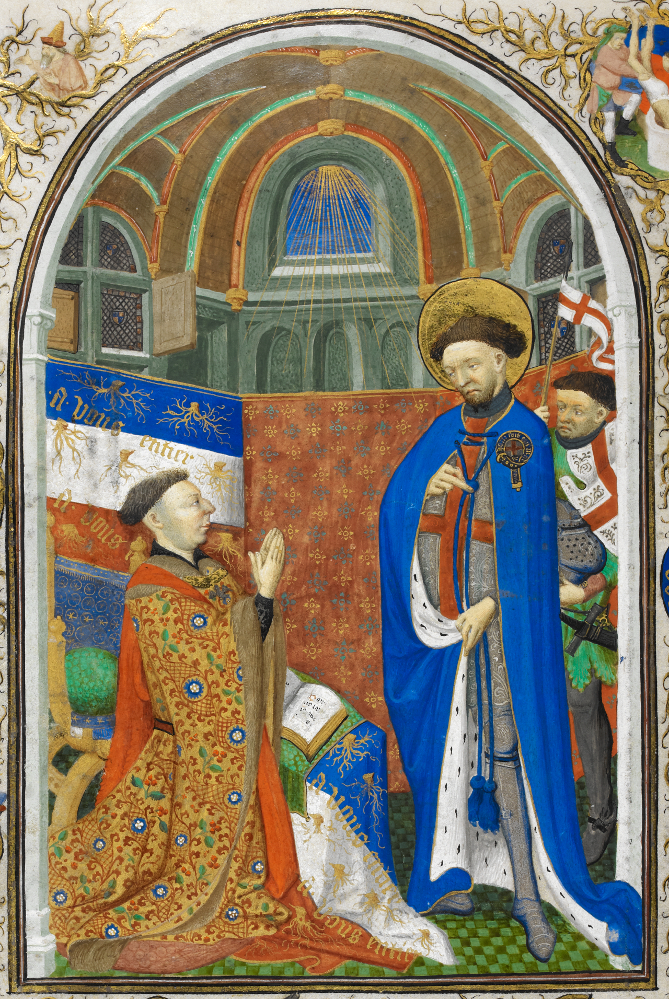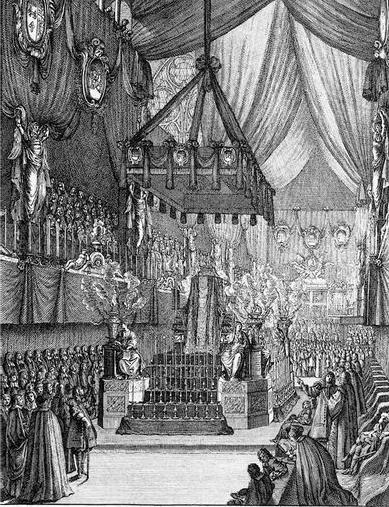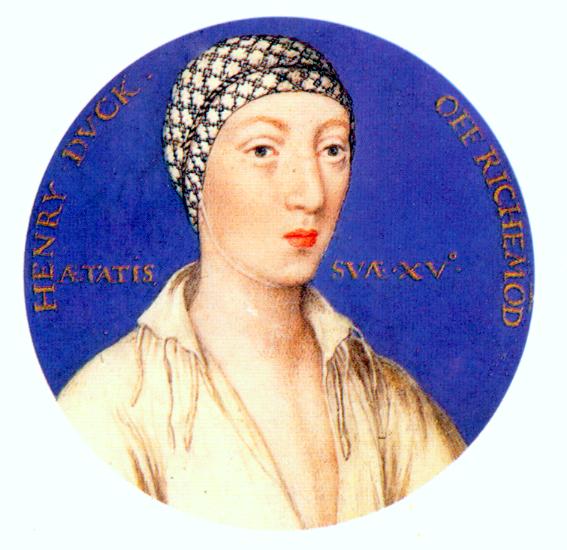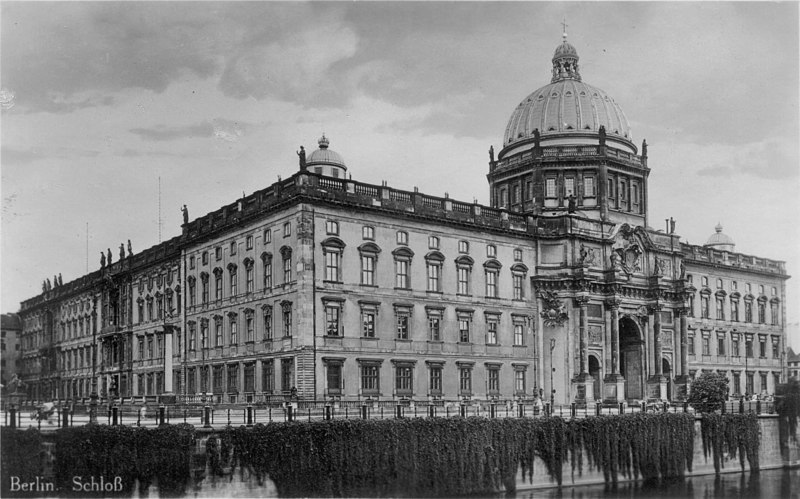by Susan Flantzer © Unofficial Royalty 2013

Philippa of Hainault, Queen of England; Credit: Wikipedia
I’ve felt a closeness to Philippa of Hainault since 2005 when I made my second visit to Westminster Abbey. My first visit was in 1990 with my sister and two children. In 2005, I was with my husband and kept telling him I was sure I saw Edward the Confessor’s tomb in 1990, but couldn’t see it in 2005. There was a verger nearby whose duty it was to answer questions, so I asked him. He said that the route tourists go through the Abbey had changed since 1990 and he would show me how to see Edward the Confessor’s tomb. He brought me to the tomb of Philippa of Hainault, located on a side aisle next to the main altar. He told me to stand on the tomb’s edge and then I would be able to see into the Chapel of Edward the Confessor. So there I was looking into the face of Philippa on her effigy while being able to see Edward the Confessor’s tomb.
Born June 24, 1314, Philippa was fourth of the nine children and the second of the five daughters of William I, Count of Hainault (also Count of Holland, Count of Avesnes and Count of Zeeland) and Joan of Valois.
Philippa’s siblings:
- William II, Count of Hainault (1307–1345), married Joanna, Duchess of Brabant, no issue
- John (died 1316)
- Margaret II, Countess of Hainault (1311–1356), married Louis IV, Holy Roman Emperor, had issue
- Agnes (died 1327)
- Joanna of Hainault (1315–1374), married William V, Duke of Jülich, had issue
- Isabelle of Hainault (1323–1361), married Robert of Namur, no issue
- Louis (1325–1328)
- Jan Aelman (1320–1389)
When Philippa was only eight years old, she was already being considered as a bride for the future King Edward III of England who was only seven. Walter de Stapledon, Bishop of Exeter was sent to inspect Philippa. The bishop gave a very detailed report to King Edward II of England. Seven years later in 1326, Prince Edward and his mother Queen Isabella were able to check out Philippa themselves when they visited the court of Hainault. The young prince liked what he saw and he and Philippa were betrothed in the summer of 1326.
In January 1327, King Edward II abdicated after he had been politically opposed and his 14-year-old son became King Edward III. A year later on January 24, 1328, Edward and Philippa married at York Minster in York, England. The couple’s main home was Woodstock Palace in Oxfordshire, England. It was Philippa’s favorite residence and the birthplace of four of her thirteen children including her eldest child, Edward the Black Prince, who was born days before her sixteenth birthday. The sons of Edward and Philippa married into the English nobility and their descendants who later battled for the throne in the Wars of the Roses.
The children of Edward III and Philippa:
- Edward, Prince of Wales (the Black Prince) (1330 – 1376), married Joan, Countess of Kent, had issue (King Richard II of England)
- Isabella of England (1332 – 1379) married Enguerrand VII de Coucy, 1st Earl of Bedford, had issue
- Joan of England (1333/1334/1335 – 1348), died of the plague on the way to marry Pedro of Castile
- William of Hatfield (born and died 1337)
- Lionel of Antwerp, 1st Duke of Clarence (1338 – 1368), married (1) Elizabeth de Burgh, 4th Countess of Ulster, had issue (2) Violante Visconti, no issue
- John of Gaunt, 1st Duke of Lancaster (1340 – 1399), married (1) Blanche of Lancaster, had issue including King Henry IV of England (2) Infanta Constance of Castile, had issue (3) Katherine Swynford (formerly his mistress), had issue (the Tudors descend from this line)
- Edmund of Langley, 1st Duke of York (1341 – 1402), married (1) Infanta Isabella of Castile, had issue (2) Joan Holland, no issue
- Blanche of the Tower (born and died March 1342)
- Mary of Waltham (1344 – 1362), married John V, Duke of Brittany, no issue
- Margaret of Windsor, Countess of Pembroke(1346 – 1361), married John Hastings, 2nd Earl of Pembroke, no issue
- Thomas of Windsor (1347 – 1348), died of the plague
- William of Windsor (born and died 1348), died of the plague
- Thomas of Woodstock, 1st Duke of Gloucester (1355 – 1397), married Eleanor de Bohun, had issue
Like other medieval consorts, Philippa often accompanied her husband on military campaigns. She was known for her kind nature and successfully pleaded for the lives of six burghers who had surrendered their city of Calais to King Edward III. Philippa acted as regent for her husband several times while he was away from England. She was a patron of the chronicler Jean Froissart who said of her “The most gentle Queen, most liberal, and most courteous that ever was Queen in her days.”
Philippa died on August 15, 1369, of a “dropsical malady” (edema) that had bothered her for about two years. She was 55 years old and had outlived seven of her children. According to the chronicler Jean Froissart, Philippa died holding the hands of her husband and her youngest child Thomas who was fourteen years old. She was buried in a tomb with an alabaster effigy in Westminster Abbey in London, England. Her husband King Edward III survived her by eight years. He died in 1377 and was succeeded by his ten-year-old grandson Richard, the only child of his eldest son Edward the Black Prince who had died in 1376.

Effigy of Philippa of Hainault; Credit – www.westminster-abbey.org
This article is the intellectual property of Unofficial Royalty and is NOT TO BE COPIED, EDITED, OR POSTED IN ANY FORM ON ANOTHER WEBSITE under any circumstances. It is permissible to use a link that directs to Unofficial Royalty.
England: House of Plantagenet Resources at Unofficial Royalty
- United Kingdom of Great Britain and Northern Ireland Index
- House of Plantagenet Index (1216 – 1399)
- British Royal Births, Marriages, Deaths, and Other Important Events
- Coronations after the Norman Conquest (1066 – present)
- History and Traditions: Norman and Plantagenet Weddings
- House of Plantagenet Burial Sites























